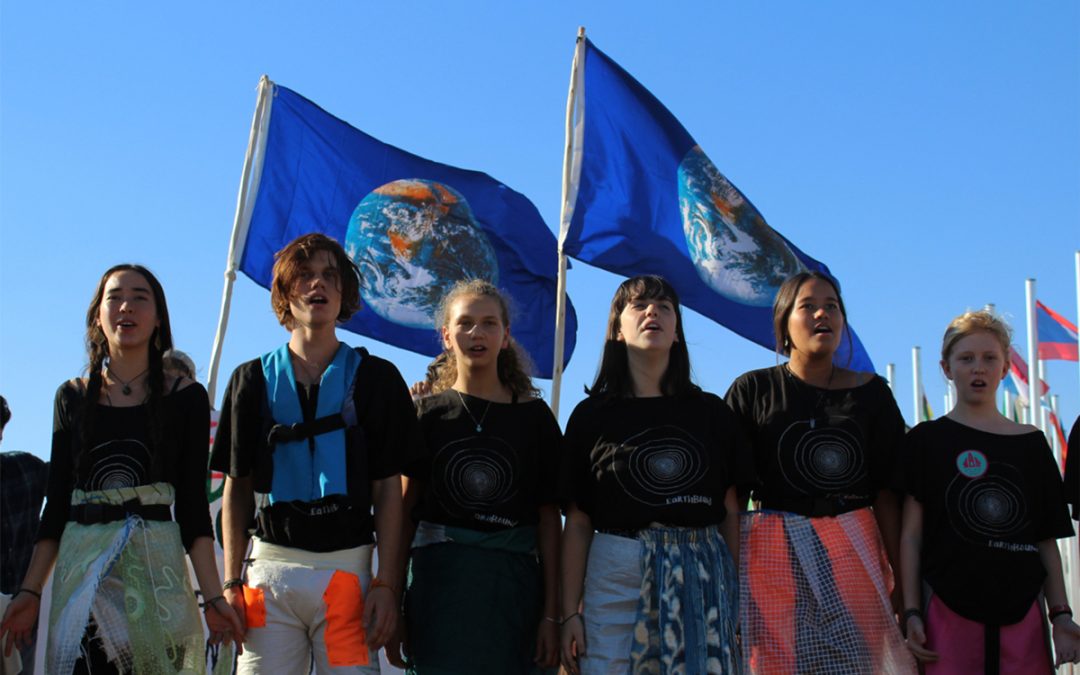The role of youth in solving the world’s problems is intrinsic. Even Leonardo DiCaprio’s most recent National Geographic Channel documentary “Before The Flood” understands this. Providing youth access to science and facts empowers them to create solutions to fight climate change, rather than being embroiled in futile debates about the truth of it.
At Green School, High Schoolers are inspired; exemplifying passion, optimism and activism in and outside of class. Walking about campus, it’s not unusual to be asked to sign a petition, to contribute to a social enterprise addressing an environmental issue, or to witness incredible arts-based performances on how we can better treat our planet.
There are more youth on the planet than ever before. According to the UN, there are approximately 1.8 billion young people now, but they represent all of our future. In November 2016, some our High Schoolers joined hundreds of other participants at the 22nd Climate Change Conference of the Parties (COP22) in Morocco. Our Head of Academics, Leslie Medema, travelled to Marrakesh with the students and shared her thoughts on how she saw the role of youth in the global dialogue on climate change:

Photo by: Roxana McDonald, www.earthbound.live/author/roxypye
“What is the role of youth in the global environmental sustainability discussion? This question permeated the day at the Sustainable Innovations Forum (SIF), a side conference to COP22 focused on innovations, mostly in green technologies. It’s held mainly for business leaders and policy makers, and it was Green School students who spurred the discussion around this complex and, at times, controversial question.
“After the US presidential election result, our group, GS Green Generation, felt an overwhelming sense of unison and youth power during the conference. Our message of youth empowerment was definitely spread to all participants! “Youth are not problem, but we are the solution!” Our group appreciated having this opportunity to be a part of this inspiring conference, and we plan to carry on our new knowledge back to … the green school community!”
-Ruby Bourke, Green School Student
The chairperson Erik Solheim of the United Nations Environment Programme (UNEP), sponsor of COP22 and SIF, gave a remarkably simple yet profound sentiment in his opening keynote address: climate change will not be solved until it is an everyday discussion around every kitchen table around the world.

Photo by: Roxana McDonald, www.earthbound.live/author/roxypye
Looking around at our students in the audience, he further remarked: Educating children is the best tool to use in order to bring that discussion to the forefront. In a room full of innovators with their solutions on display, no one else with a microphone was talking about innovative education and supporting it. So Green School’s students, the only students invited to this event, asked the important questions to CEOs and policymakers at the highest levels of these organisations: How did they feel their policies and decisions were including the voice of the youth? How are they communicating with the youth? Do they have channels to ask what the youth want?

Roxana McDonald, www.earthbound.live/author/roxypye
Common counterpoints to youth involvement (related to the perception that youth are activists and not engaging diplomatically) implies that they are; demanding rather than listening; publicly shaming versus acting, and speaking with diplomacy due to a lack of skills and depth of knowledge. But are activism and policy level engagement mutually exclusive? Should students only be allowed to engage when they are ready to come to the table with policy makers at their level? Surely, the youth must learn how to engage thoughtfully and respectfully, but global leaders have a role to meet the youth at the table of understanding as well.
These questions and discussions were preceded by a topic even more basic. What defines “youth” in this engagement? Youth, as it was generally referred to in these forums included university-aged students. We know, however, that it must include those much younger too. Green School is uniquely poised to lead the way and provide some solutions and answers to these profound questions on youth engagement.
What we know today, and what our students showed, is that the mission of the Green School in the global context must first be one of overall humility that begins with service to the local community and then to global action; from local to global. Deciding how that action looks is the next inspiring step for our community of learners to take.”
You can read more perspectives on COP22 from Green School students on their blog:
www.earthbound.live

